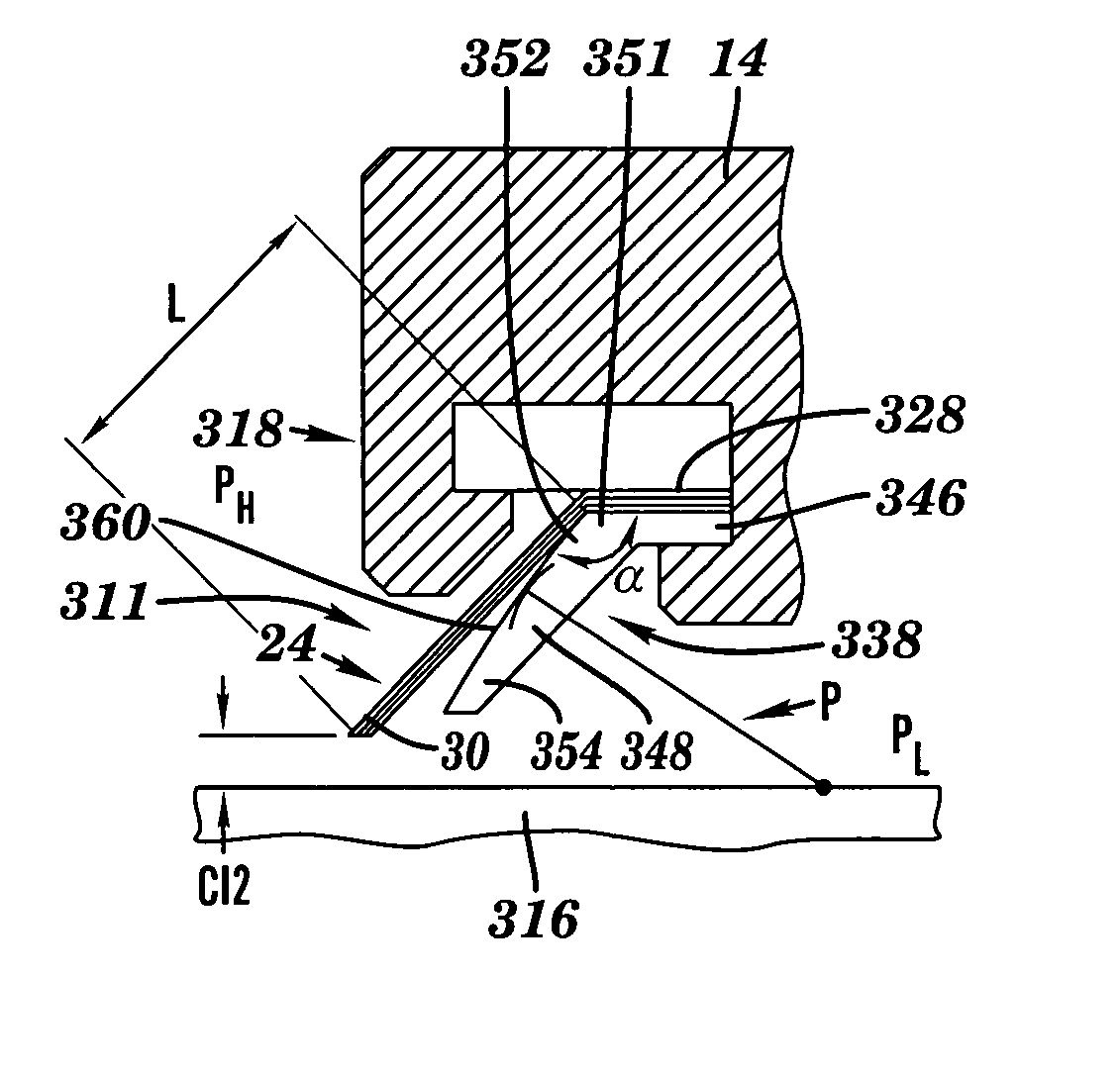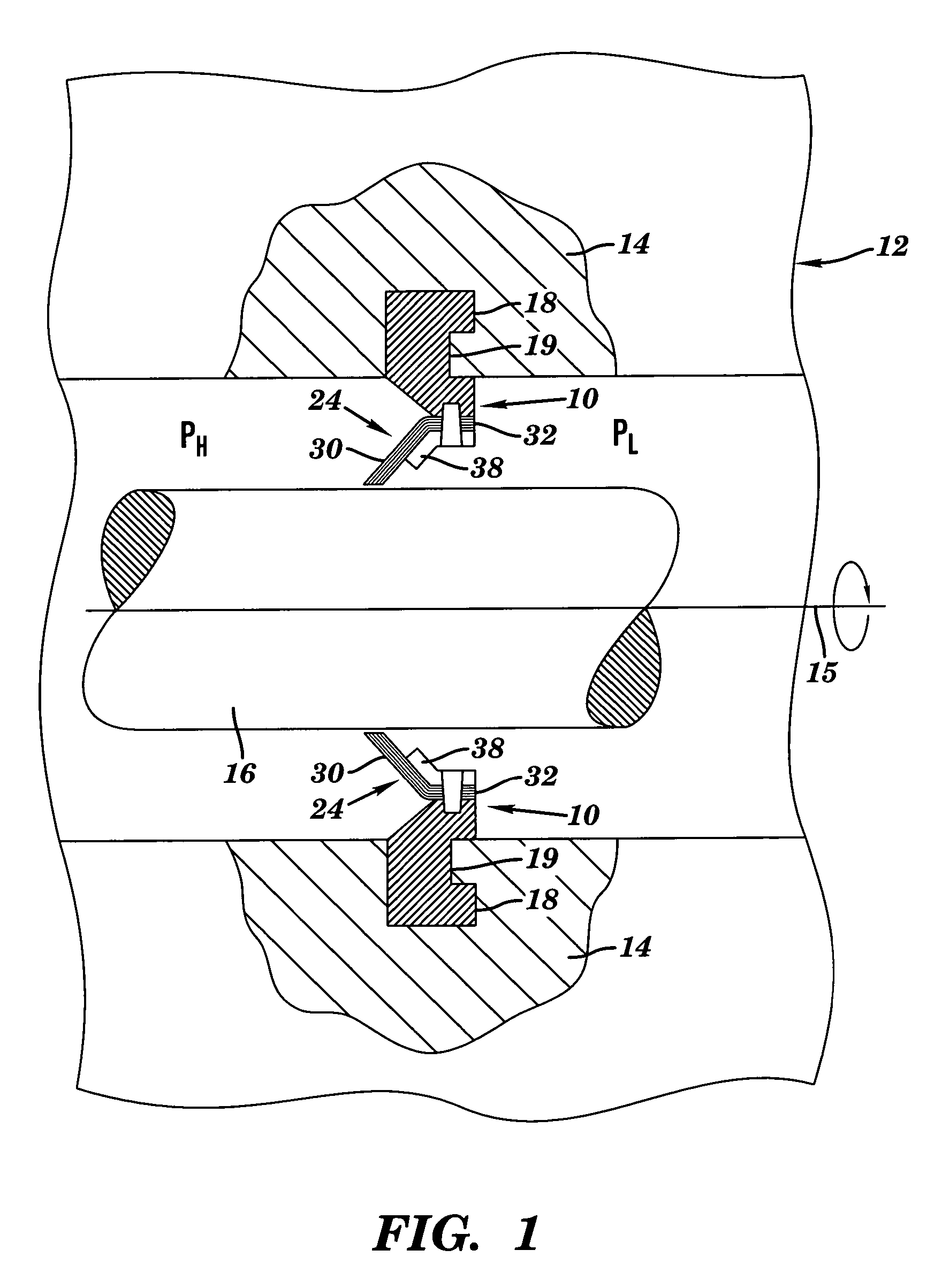Seal assembly and rotary machine containing such seal
a technology which is applied in the field of sealing assembly and rotary machine containing such seals, can solve the problems of reducing the service life of the seal, and reducing so as to reduce the force imposed by the rub engagement on the rotating component, the effect of reducing the cos
- Summary
- Abstract
- Description
- Claims
- Application Information
AI Technical Summary
Benefits of technology
Problems solved by technology
Method used
Image
Examples
Embodiment Construction
[0049]Referring to FIGS. 1 and 2, the present invention provides a seal assembly 10 for use with a rotary machine 12. Rotary machine 12 may be any well known machinery that includes a non-rotating component 14 and a rotating component 16 having a longitudinal axis 15, e.g., a gas turbine, a jet engine, a steam turbine, etc. For description purposes, the present invention will be described in terms of a steam or combustion (gas) turbine having a stator or stator body 14 and a rotor 16. As shown in FIG. 1, a higher pressure chamber PH and a lower pressure chamber PL are generated during steady state operation of rotary machine 12. Pressure from higher pressure chamber PH is exerted against at least part of seal assembly 10, which acts to seal higher pressure chamber PH from lower pressure chamber PL. FIG. 2 shows an embodiment of rotary machine where a number of arcuate seal assemblies 10 are utilized about rotating component 16.
[0050]Turning to FIGS. 3 and 4, seal assembly 10 include...
PUM
 Login to View More
Login to View More Abstract
Description
Claims
Application Information
 Login to View More
Login to View More - R&D
- Intellectual Property
- Life Sciences
- Materials
- Tech Scout
- Unparalleled Data Quality
- Higher Quality Content
- 60% Fewer Hallucinations
Browse by: Latest US Patents, China's latest patents, Technical Efficacy Thesaurus, Application Domain, Technology Topic, Popular Technical Reports.
© 2025 PatSnap. All rights reserved.Legal|Privacy policy|Modern Slavery Act Transparency Statement|Sitemap|About US| Contact US: help@patsnap.com



